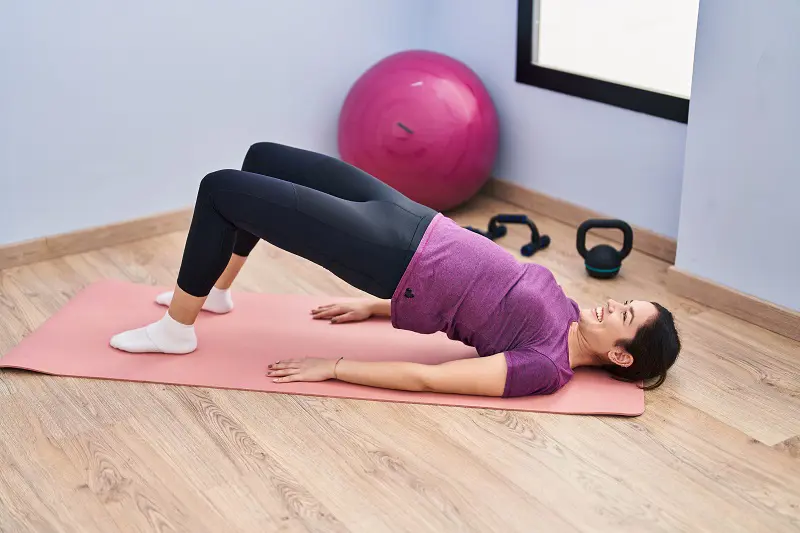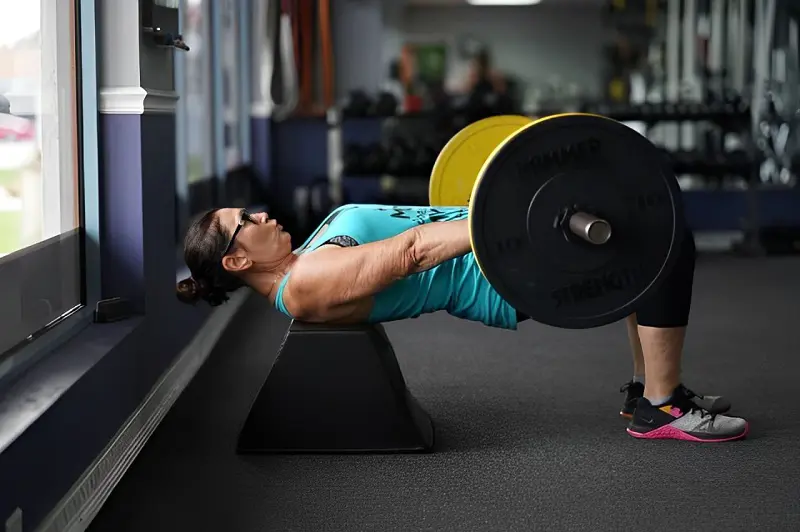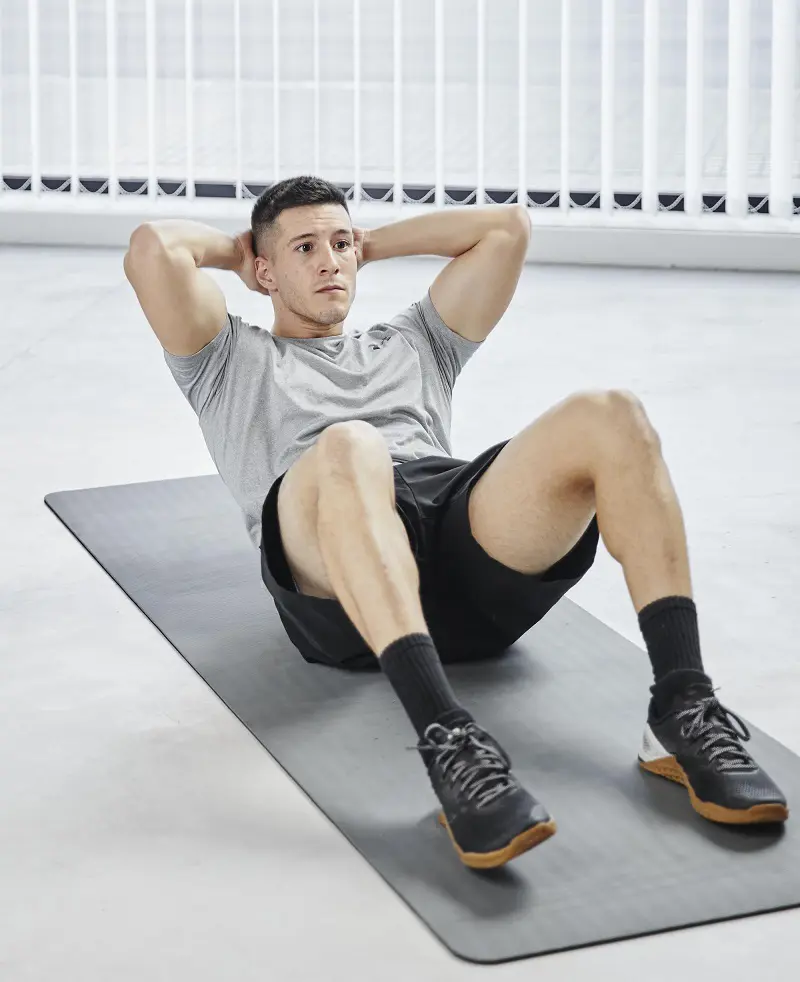How to Do A Plank: Methods, Benefits, And Types
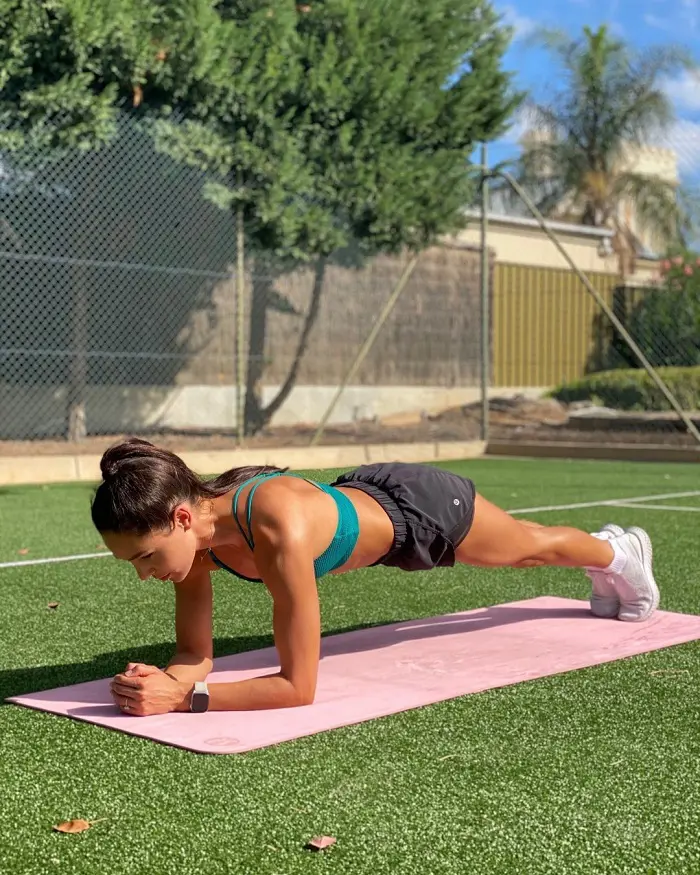
Achieving a strong core often involves holding the body straight and parallel to the ground. This method, known as a plank, enhances overall stability and endurance. Including this exercise in your routine can improve posture and strength.
It’s a simple yet effective way to boost core fitness. In this guide, let's break down the methods, benefits, and different types of planks for you. Proper technique and consistency are key to maximizing the benefits of this exercise.
How To Do Plank: Step-By-Step Guide
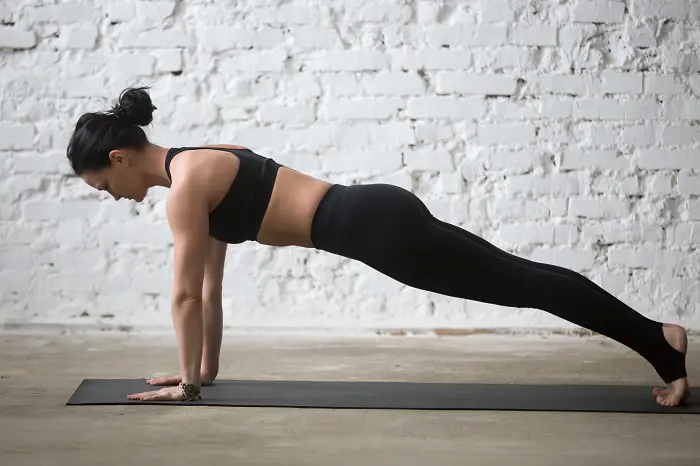
A plank is a fundamental core exercise that primarily engages the rectus abdominis while also strengthening your shoulders, back, and glutes. The main aim of this exercise is to enhance core stability, improving posture and overall body strength.
It’s a simple yet highly effective move that can be done anywhere. All you need is a flat surface and determination to hold your form for extended periods. Here is the step-by-step guide on how to do this exercise properly:
1. Get into position
To begin doing planks, lie your face down on the floor and place your forearm flat on the ground, with your elbow directly below your shoulders. Then, stretch your legs outside and your toes on the floor.
2. Lift yourself up
After getting into position, the next step is to slowly lift the body off the ground while keeping a straight line from head to heel. Engage your core and create a balance between your arms and legs.
3. Hold it steady
Keep your core tight, secure your hip, and don't release or raise your body too high. Imagine you are a straight board of wood, solid and robust. Stay in this position for a few minutes.
4. Lower and relax
Slowly lower yourself back down to the floor. Take a breath and relax before repeating.
Benefits Of Plank

1. Strengthens Core Muscles
Want a stronger core? Planks have got your back. They work your abs, obliques, and lower back all at once. Think of it as a full-on core workout that helps with balance and stability in almost everything you do. Plus, sticking to it can boost your athletic game and keep injuries at bay.
2. Improves Posture
Struggling with posture? Planks can help straighten you out. Doing them right aligns your spine and strengthens those key muscles that keep you standing tall. Over time, you'll slouch less and sit up straighter. This not only eases back pain from sitting too long but also boosts your confidence.
3. Enhances Balance
Balancing act? Planks have you covered. Keeping your body steady during a plank sharpens your balance and coordination. This exercise aids in stabilizing muscles, vital for staying upright and steady. Better balance means you’ll perform better in other workouts and avoid trips and falls.
4. Increases Flexibility
Need more flexibility? Planks stretch your shoulders, hamstrings, and toes while you hold the position. This helps you move more freely and efficiently. Increased flexibility means less muscle stiffness and better overall physical performance. So, give planks a go and see the difference.
Types Of Planks
To add variety to your workout and target different muscle groups, you can explore various types of planks. Here are some plank variations you can incorporate into your exercise routine:
1. Tabletop Plank
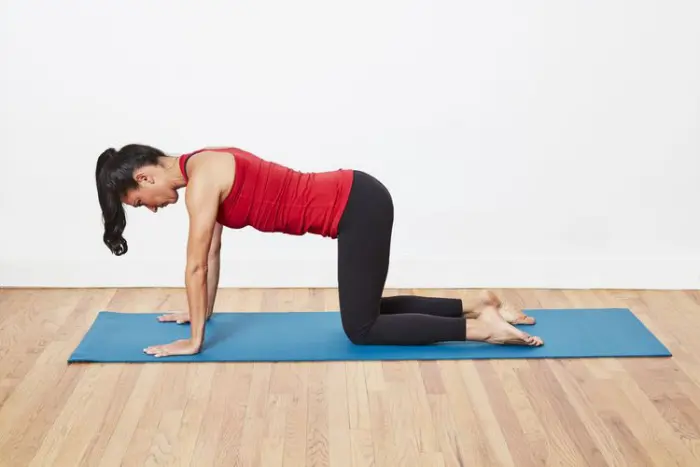
Let's talk about the tabletop plank or the high plank. Imagine you're on all fours-hands beneath your shoulders, knees below your hips. Now, kick those legs back and lift your body so you're balancing on your hands and toes, forming a straight line.
This move works your core, shoulders, and back. It helps you build stability and strength, which is super handy for any workout routine. Think of it as laying the groundwork for better body control. You might find it tough at first, but stick with it. Your body will thank you later.
How To Do:
- Drop down to your hands and knees, almost like you're ready to start crawling.
- Position your hands directly beneath your shoulders, and align your knees under your hips for stability.
- Lift your knees off the floor and extend your legs behind you.
- Form a seamless line by the entire body position from the top of your head to the tips of your heels.
- Engage your core muscles tightly, keeping everything stable, especially your hips.
2. Plank With Leg Lift
Plank with Leg Lift cranks up the difficulty, making your core workout extra spicy. Picture this: you start in a regular plank, body straight as an arrow, then lift one leg off the ground. Keep that core tight and those hips steady.
Why bother with this? Well, it doesn't just work your core. Your glutes and lower back get in on the action too, boosting your overall strength and stability. And when you switch legs? It’s like giving your balance a fun little challenge.
How To Do:
- Raise one leg 5 to 8 inches off the floor.
- Hold and count to two.
- Slowly lower your leg back down.
- Switch legs and do it again.
3. Incline Plank
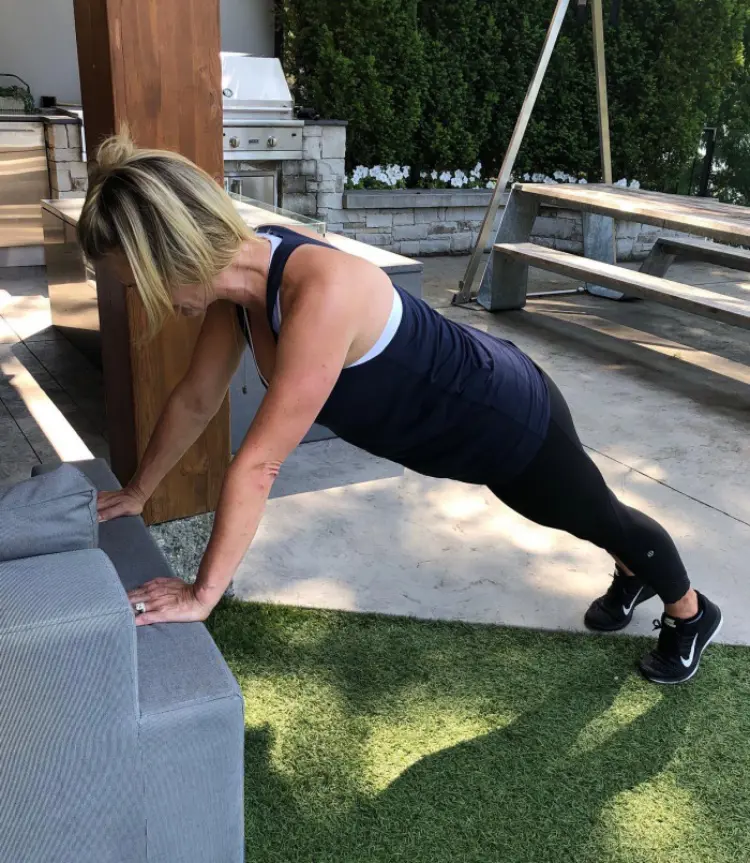
Ever tried an incline plank? It's like the regular plank's chill cousin. Instead of the floor, you use something like a bench or step.
How To Do:
- First, put your hands on that elevated surface. Stretch your legs out behind you.
- Make sure your body looks like a straight arrow from head to heels.
- Just remember to keep your core tight and your body aligned. No sagging hips or lifting too high.
- Hold steady for as long as you can. Keep breathing smoothly and focus on your core.
- When you're done, lower yourself gently or step off. Rest up and go again if you’re feeling it.
4. Plank With Arm Lift
Introducing an arm lift into your plank routine adds a new level of challenge and intensity. This variation not only engages the core but also involves the shoulders, helping to enhance stability and overall strength. Adding arm lifts to your planks contributes to improved balance and coordination.
How To Do:
- Keep your arms on the floor and your body in a straight line like a standard plank position.
- Slowly lift one arm off the floor and stretch it forward.
- Keep your body stable and aligned.
- Raise your arms and hold for a moment. Then lower it and move to the other arm.
- Continue alternating arm lifts for the desired duration, maintaining steady breathing and core engagement.
5. Forearm Plank
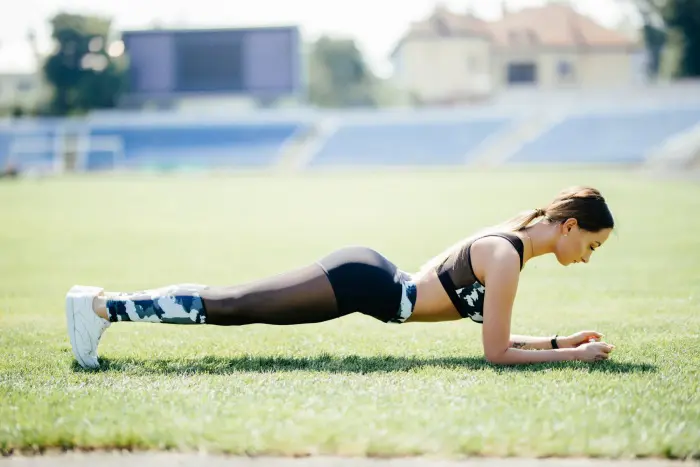
This is a killer core exercise that revolves around working those abs, back, and shoulders. This version leans on your forearms, allowing your wrists and shoulders to pause a bit.
How To Do:
- First, get down on the ground with your elbows under your shoulders.
- To balance on your forearms and toes, you push yourself up.
- Stay with the forearm shelf, and you'll notice better nuclear stability.
6. Knee Plank
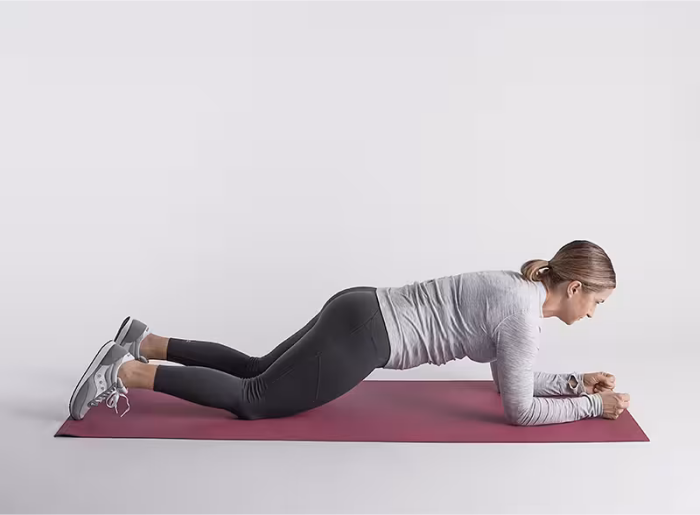
A beginner or someone returning to planks after a long time can start with a knee plank in the initial phase. This movement won't strain your lower back, but you'll still work your core like a champ. As you get stronger, you can step it up to the traditional forearm plank.
How To Do:
- First, lie face down along with your forearms flat on the ground.
- Make sure your elbows are properly under your shoulders.
- Press the one's forearms into the ground and raise your torso up, retaining your knees, feet, and elbows touching the floor.
- Keep that middle tight and your neck neutral- don’t look up or down.
- Your hips should stay level by tucking your pelvis and squeezing your glutes to maintain the placement.
- Try to preserve this stance for 30 seconds, or as long as you can without losing shape.
7. Straight-Arm Plank
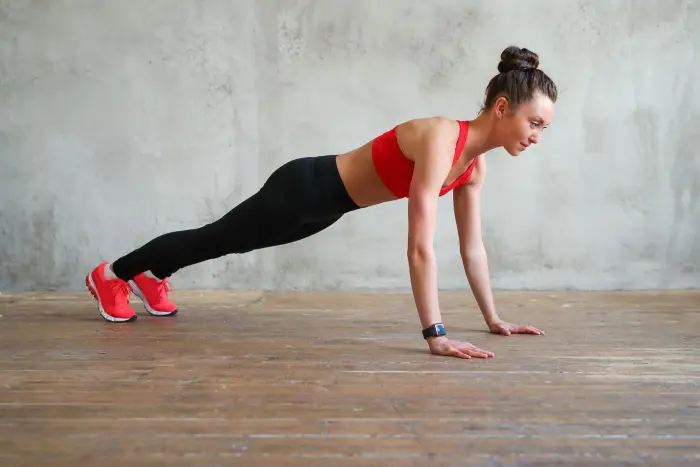
The Straight-arm plank is a staple core workout that focuses on maintaining a rigid, immediate line from the pinnacle down to the heels. Unlike the forearm plank, this variant calls for full arm extension, placing extra strain on the shoulders and wrists.
This twist amps up the venture for not only your core but also your shoulders and top lower back, boosting balance, endurance, and control. Beyond natural power, it additionally examines your stability and coordination, making it an extremely good addition to any fitness regimen focused on building complete-body resilience.
How To Do:
- Start by getting into the workout with your hands planted firmly on the floor and your toes assisting you.
- Keep your arms absolutely prolonged, and shoulders stacked without delay above your wrists.
- Ensure your frame forms a direct line from head to heels, with your center engaged to preserve that ideal alignment.
- Avoid dipping your hips too low or letting them lift too excessively.
How To Hold Plank For A Longer Time?
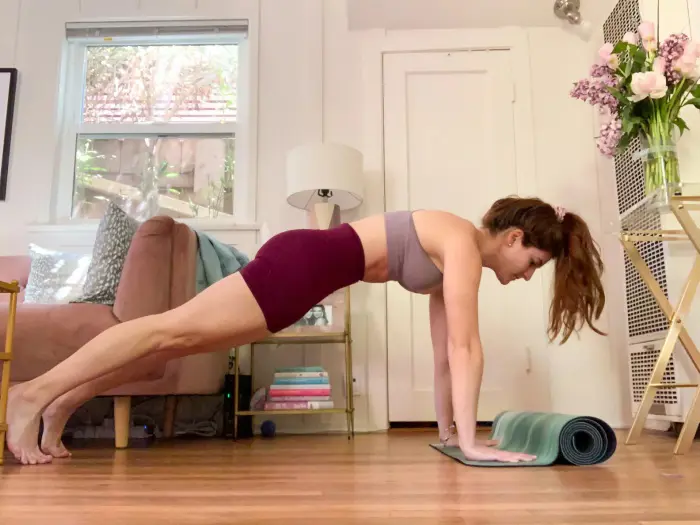
It might feel like a long time, even when holding a plank for just a few seconds. But with a few strategic tips, you can make it a bit easier and extend your hold time. Incorporate these techniques to improve your plank performance and make those seconds count:
- Incorporate planking into your daily routine.
- Refrain from frequently checking the timer.
- Distract yourself by reading or watching videos while planking.
- Count down slowly from a high number.
- Extend your hold until you feel discomfort, then continue for an extra 30 seconds.
Common Mistakes To Avoid
Many people do planks without considering proper form and alignment, which can diminish their effectiveness and lead to discomfort. Here are some common mistakes to watch out for to ensure you're performing planks correctly:
1. Sagging Hips
If your hips are dropping, it’s like asking for a backache. Keep your body straight as a board from head to heels. Engage your core to help maintain proper alignment throughout the exercise.
2. Raising Hips Too High
Pushing your hips up turns the plank into a weird downward dog. Keep your hips level with your shoulders to stay focused on your core. This alignment ensures you’re effectively targeting the right muscles.
3. Incorrect Hand Placement
Got your hands too far forward or back? That’s a recipe for shoulder pain. Plant your hands right under your shoulders for proper alignment. This position helps in distributing the weight evenly.
4. Holding Breath
Keep a steady flow of breaths to stay engaged and focused. Proper breathing supports endurance and overall performance. Stick to these tips, and your planks will be on point.
Safety Tips and Precautions
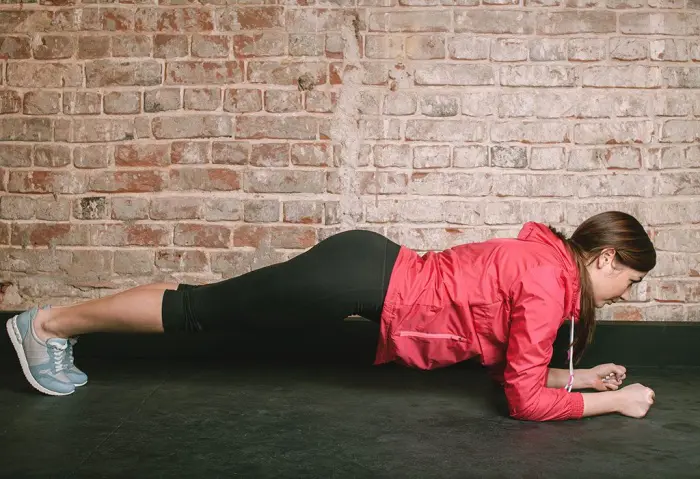
Maintaining proper form during planks is crucial to avoid injury and maximize benefits. Follow these safety tips and precautions to ensure a safe and effective plank workout.
1. Avoid Planks with Shoulder Injuries
Got a Shoulder Injury? Skip Planks. If your shoulder’s giving you trouble, planks might make things worse. If you're feeling pain while planking then stop right away.
2. Listen to Your Body
If you feel sharp pain or discomfort, hit the brakes. Planks should work your muscles, not hurt you. Adjust your form or take a break if you need to.
3. Consider Pregnancy Precautions
Pregnant? Take It Easy. Planks are usually fine when you’re expecting, but they can put pressure on your tummy. Try switching to side or incline planks to keep things comfy.
4. Maintain Proper Alignment
To maintain proper alignment, keep your hands lined up under your shoulders and a slight bend in your elbows. This helps avoid shoulder pain. Keep your head and neck in line with your spine to dodge neck aches.
Recent posts
How To
How To
How To Do Burpee Properly For Beginners At Home
Burpee is a combination of two-part exercise, pushups followed by a leap in the air and squats. It is a challenging exercise that works many of the major muscle groups in your body. Doing multiple reps of this exercise back-to-back could be quite exh...
How To
How To Get Rid Of Neck Hump With Exercises At Home
A neck hump is a curved appearance in the back of our neck that may lead to an unflattering look and discomfort. Also known as Dowager’s Hump or Kyphosis, this condition is often caused by poor posture, aging, or weight gain. Fixing it could ta...
How To
A Guide On How To Do Dumbbell Pullover Exercise Properly
A dumbbell pullover is a well-known strengthening exercise loved by bodybuilders for working the chest and back. It also builds your lats and triceps, making them an ideal addition to your strength workout routine. When you are in your first attempt,...
How To
How To Do Clamshell Exercise Properly For Strong Lower Body
Strengthen your glutes, core, and legs with the clamshell workout. Practicing it consistently can offer lots of benefits, from reducing back pain to improving balance. While it might seem confusing for a newcomer, this exercise is quite simple - lie ...
How To
How To Do Glute Bridge Exercise Correctly For Beginners
Glute bridge is a fantastic exercise that targets the glutes, core, and hamstrings. People practice it to strengthen their glutes, improve core stability, and even reduce back pain. To truly reap these benefits, though, we have to perform it correctl...
How To
How To Do Hip Thrusts: Methods, Benefits And Types
The hip thrust is a great bodyweight move for building strong glutes and a solid core. Also called the hip thruster, it’s great for improving posture and easing lower back pain. To get the most out of it, nailing the form is key. Everything fro...




